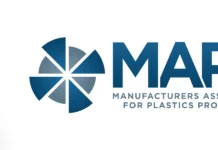by Staff
Over the last decade, the services that plastics manufacturing businesses provide to their customers have expanded at an exponential pace. Much of this expansion has been fueled by competition; competition that has pushed plastics processors to expand capabilities beyond their core competencies to include secondary services like decorating (in-mold labeling, painting, pad printing, etc.) and engineering-based services. Now processors, after enriching their human capital and investing heavily in assets required to provide more engineering-based services to gain an advantage in the marketplace, find themselves at interesting crossroads.
Overall, the benefactors of this intense competition among plastics processing companies have been the Original Equipment Manufacturers (OEM) and end-use customers. In fact, one might be safe in saying that the services now offered by the average plastics business have enabled some customers to the plastics industry to sufficiently reduce and/or eliminate their own engineering expertise. As reliance upon the plastics manufacturer to provide additional engineering services increases, a number of new opportunities begin to avail themselves to the community of plastics processors.
One of the more interesting opportunities that currently exists is the ability for processors to charge a fee for engineering services. For example, services like mold design, materials selection, and prototyping have traditionally been viewed as services simply included as part of the routine for securing the production job. In other words, processors have allowed their customers to drive the inclusion of these services into the total job package, and in many instances, customers have come to expect these additional services at no extra charge. Now, many plastics business leaders, including some with substantially reduced margins, are examining the value they are adding in the design and development process and wondering why the customer is not footing the bill for some of the investment.
The 2010 Engineering Services study, commissioned by members of the MAPP organization, was undertaken to better understand the trends in providing engineering-based services to customers of the plastics industry. More specifically, addressed in this report are the services offered by companies and the fees or rates being charged for providing these services to the customer.
Data Summary The baseline data included in this Engineering Services report was collected via the use of an electronic survey format where plastics executives were asked about the types of services they provide to customers and what, if anything, they charged for providing these services. A total of 37 plastics industry executives completed the electronic questionnaire. Of those completing the survey, 100 percent offered some type of engineering service to their customer base, but few were actually engaged in providing services on a fee basis.
The Engineering Services study revealed that the most common value-added service offered to OEMs and end-use customers was Tooling Design, as over 83 percent of the survey participants indicated possessing this expertise. Prototyping was the next most cited value-added engineering service, as three out of four survey respondents reported providing this expertise to their customers. Product Analysis, which included mold flow and finite element analysis, was the least offered service as only 50 percent of the respondents indicated providing this as a value-added offering.
Although some plastics business executives are finding that the engineering department can be made into a stand-alone profit center, 24 percent of the survey respondents indicated that they intentionally do not charge for engineering services, while 35 percent indicated they provide engineering services solely to land new jobs and 6 percent admitted that they dont know how to charge for providing these services.
Of the plastics business leaders who make the effort to capture the costs of providing engineering services, one in five indicated that they build engineering costs into the piece part price, while 24 percent indicated that they build engineering costs into their machine rates and nearly 1/3 charge by the project.
Indications of Future Direction The overall objective of conducting MAPP’s first-ever Engineering Services Survey was to better understand the distribution of “rates charged” by plastics processors for providing value-added engineering services, including mold design, material selection, product design, prototyping, and more. The results of this study clearly demonstrate that the majority of plastics business leaders are just now beginning to explore the feasibility and market potential for providing engineering services on a fee basis to their customers. However, a small percentage of plastics processors have already elected to begin charging for engineering services which were, at one time, simply included in the process of landing the next production job. The rates charged can provide a guideline to processors as they begin to place a value on their own engineering expertise.
Because leaders of the MAPP organization anticipate that more and more plastics processors will move to a fee-based arrangement for providing engineering services to customers, MAPP is committed to annually benchmarking rates charged to track market response to this new business model.
To obtain the full 2010 Engineering Services report, contact MAPP at (317) 913-2440 or visit www.mappinc.com. The cost of the full report is $29.99 for members or $69.99 for non-members.




